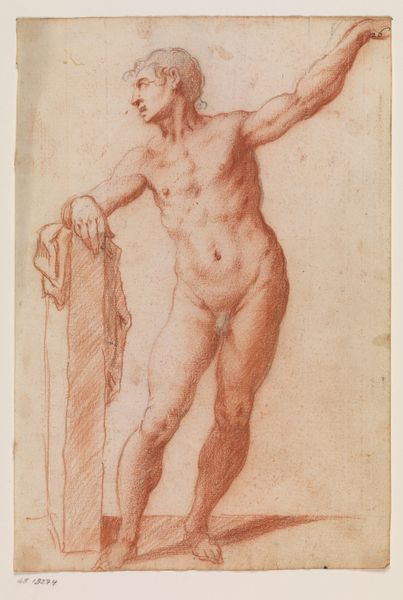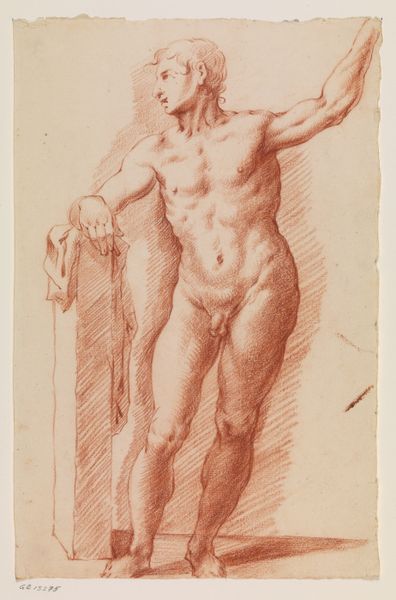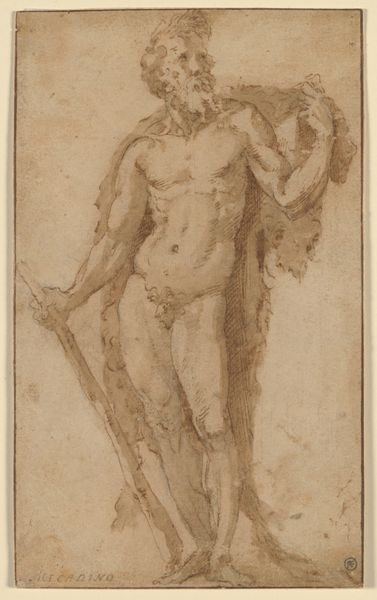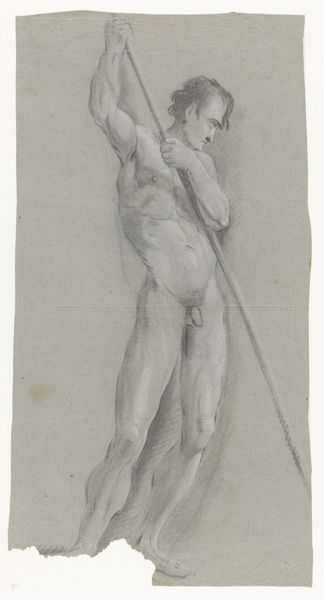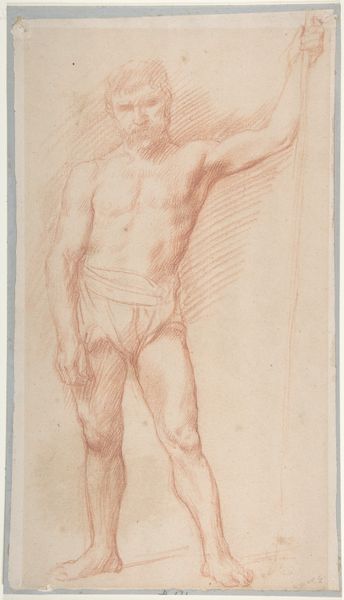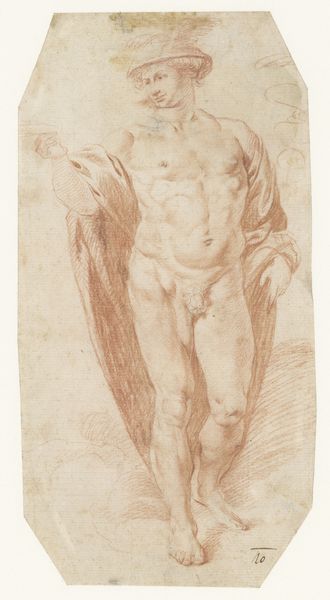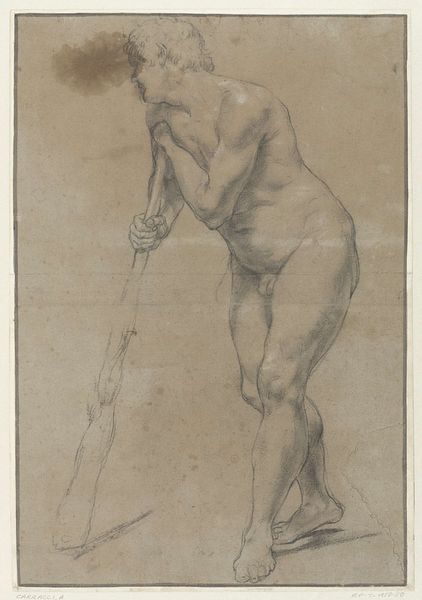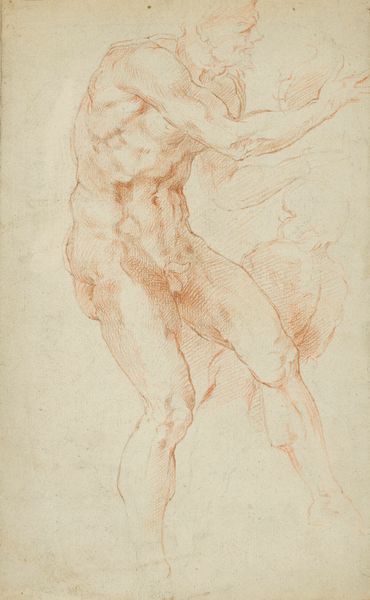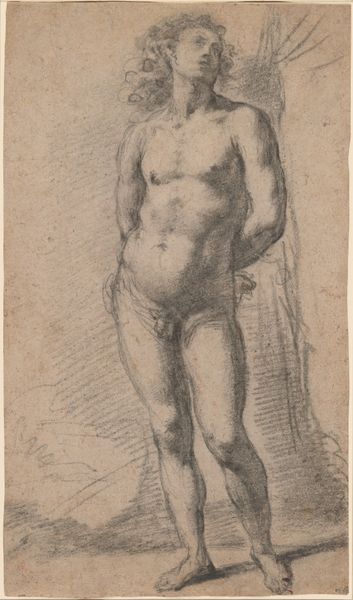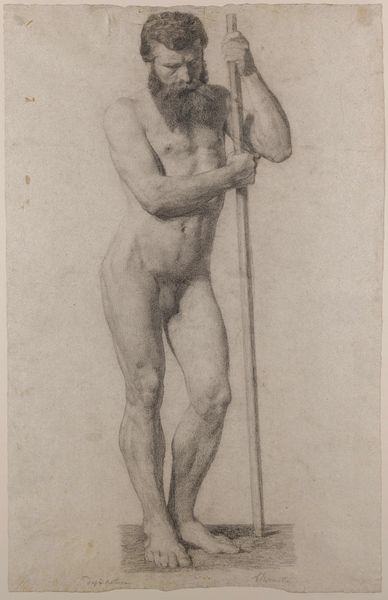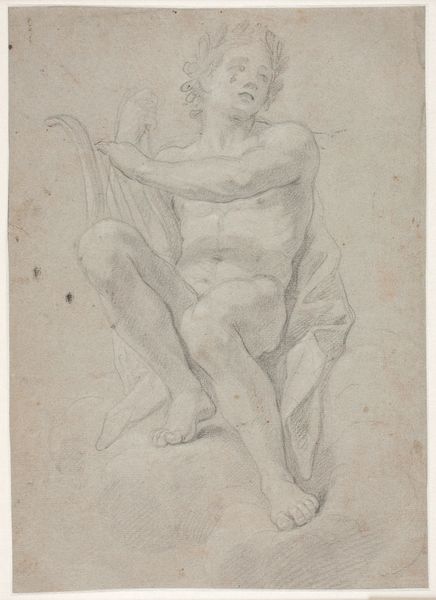
drawing, dry-media
#
drawing
#
figuration
#
11_renaissance
#
dry-media
#
italian-renaissance
#
nude
#
male-nude
Dimensions: Sheet: 15 11/16 × 9 3/8 in. (39.8 × 23.8 cm)
Copyright: Public Domain
Editor: Here we have Agostino Ciampelli's "Standing Male Nude," dating back to somewhere between 1600 and 1650. The reddish chalk really lends it a warm, classical feel, but it seems unfinished. What do you see in this figure? Curator: I see echoes of idealized forms from classical antiquity, filtered through the lens of Renaissance humanism. The nude male, of course, is an enduring symbol of strength, beauty, and intellectual prowess, tracing its lineage back to ancient Greece. But what do you think that rod represents? Editor: I assumed it was just a staff, something to lean on, but I suppose it could be a spear or a symbol of authority. Curator: Indeed! Consider how such objects – staves, scepters, weapons – operate within visual language. They imbue the figure with agency. They invite narratives of power, protection, or pilgrimage. It also leads my eye, in connection to the figure's reaching arm; both imply motion, so perhaps the cultural memory of a warrior? Editor: That's interesting. So even without a fully rendered background, Ciampelli hints at narrative possibilities through these visual symbols. It almost creates a stage upon which viewers could play out various possible stories. Curator: Precisely! It invites speculation, demonstrating the power of the unfinished, allowing our own cultural understanding to project meaning. This interplay between artistic intention and viewer interpretation is, I think, what makes this such a captivating drawing. Editor: I hadn't thought about it that way – how an unfinished work could invite broader interpretations. Thanks! Curator: My pleasure. Visual symbology really enhances how we interact with art.
Comments
No comments
Be the first to comment and join the conversation on the ultimate creative platform.
